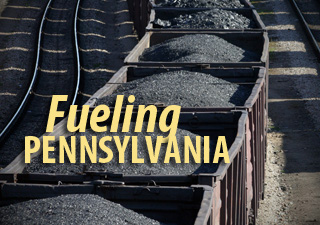Media
Coal Faces an Onslaught of New Regulations
 Debate over new regulations by the EPA puts the Pennsylvania coal industry at a crossroads. Last week, experts met in Philadelphia to discuss a new ruling known as the Clean Air Interstate Rule. The measure requires 31 states, from Massachusetts to Texas, to reduce sulfur dioxide emissions from 2005 levels by 71% and nitrogen oxide emissions by 52% by 2014.
Debate over new regulations by the EPA puts the Pennsylvania coal industry at a crossroads. Last week, experts met in Philadelphia to discuss a new ruling known as the Clean Air Interstate Rule. The measure requires 31 states, from Massachusetts to Texas, to reduce sulfur dioxide emissions from 2005 levels by 71% and nitrogen oxide emissions by 52% by 2014.
The impact on the coal industry would be significant, forcing many small and older coal-fired generation plants to close. Doug Biden, President of the Electric Power Generation Association, noted about 65% of Pennsylvania’s coal-fired electricity capacity already meets or exceeds the standards set forth by the EPA; however, older and smaller plants do not.
While the Philadelphia Inquirer touts the new ruling as a way to save billions on health care costs brought on by asthma and other lung problems, there are also significant disadvantages. The new regulations are expected to cost plants in Pennsylvania a total of $2.8 billion dollars, an insurmountable amount for some of the state’s oldest plants. And companies contend the actual cost of regulations will be much higher.
It’s likely that over time, the industry would have closed older plants and continued upgrades. For example, PPL recently spent $1.4 billion for pollution controls on its 1961 plant in York County and Montour plant built in 1972. Sulphur dioxide emissions at Montour fell 88% – from 128,000 tons in 2007 to 15,000 tons in 2009.
But forcing large emission reductions immediately will not only result in lost jobs, as plants close, but higher electricity prices — hurting all businesses. Jeff Holmstead, a former EPA official who authored the original interstate rule, said it was not clear whether utilities will be able meet the new standards while still providing affordable and reliable electric power.
See my commentary today on the inconsistency of punishing traditional energy while offering corporate welfare for alternative energy.